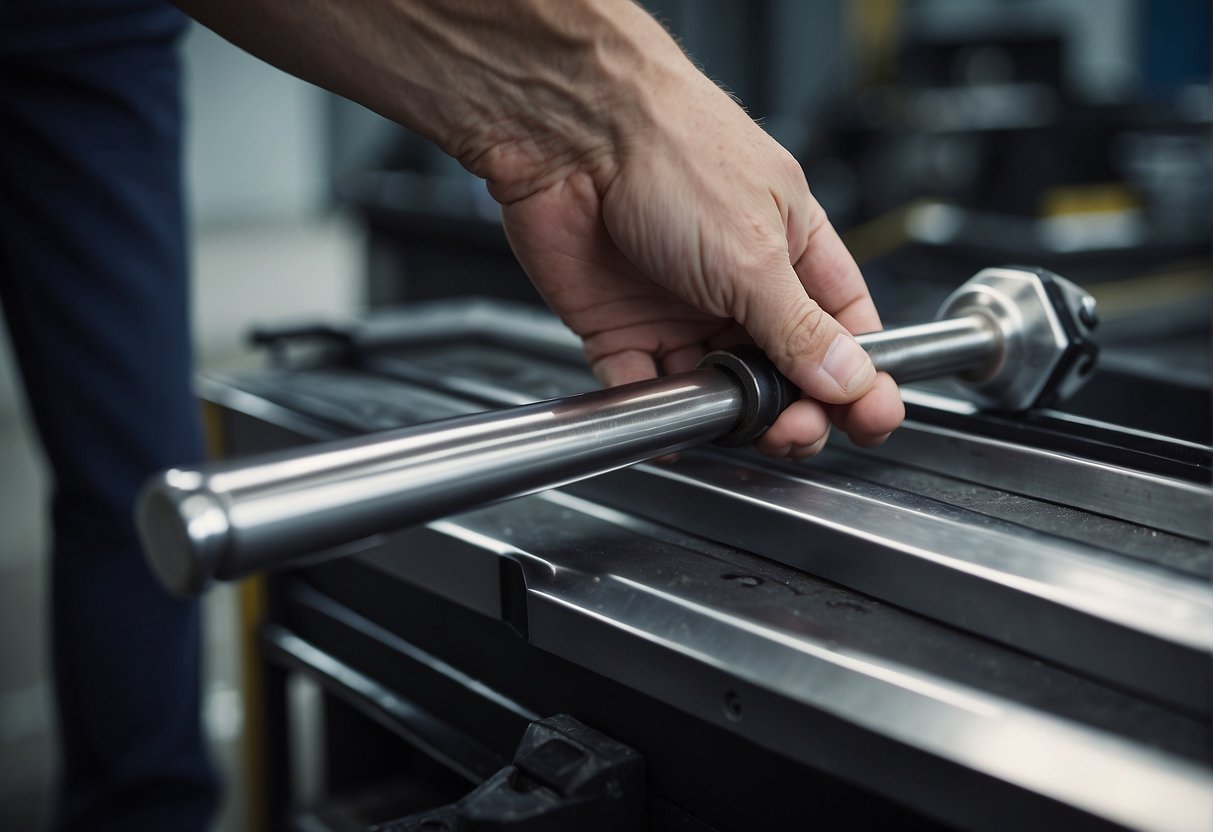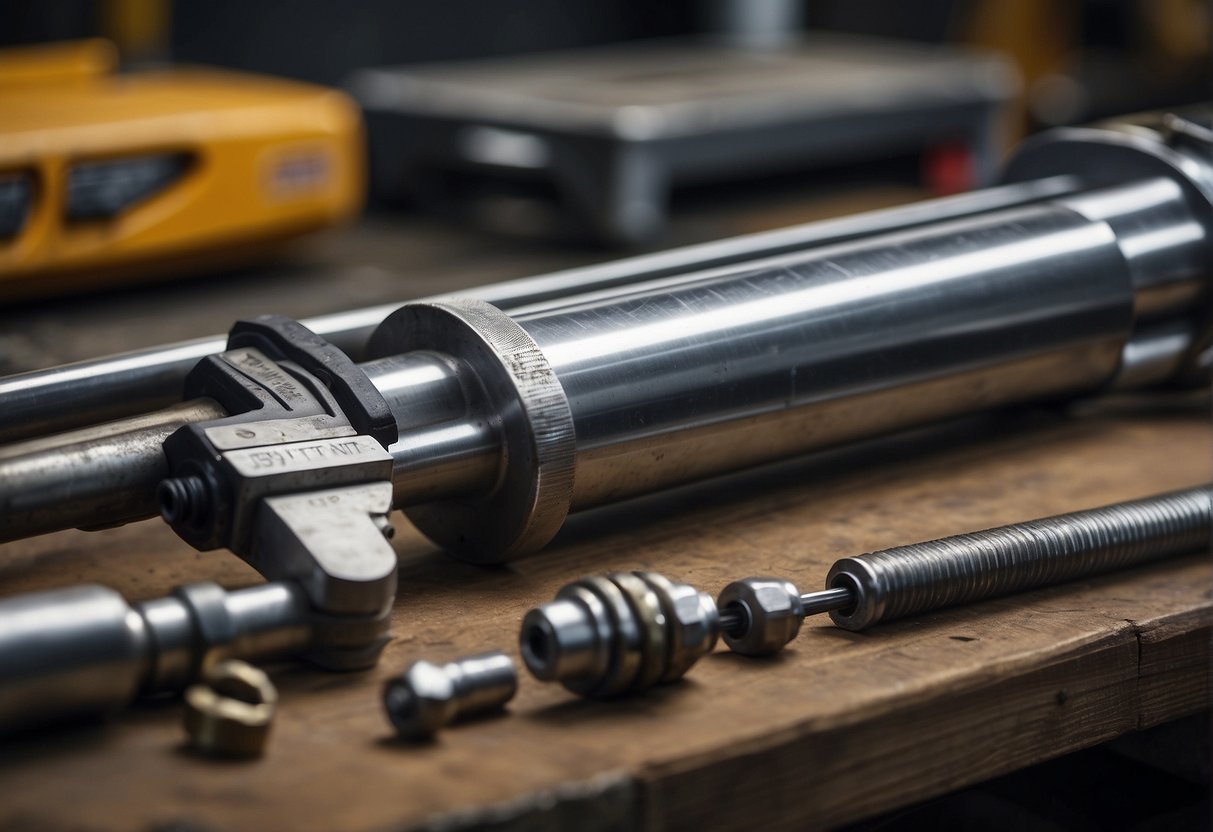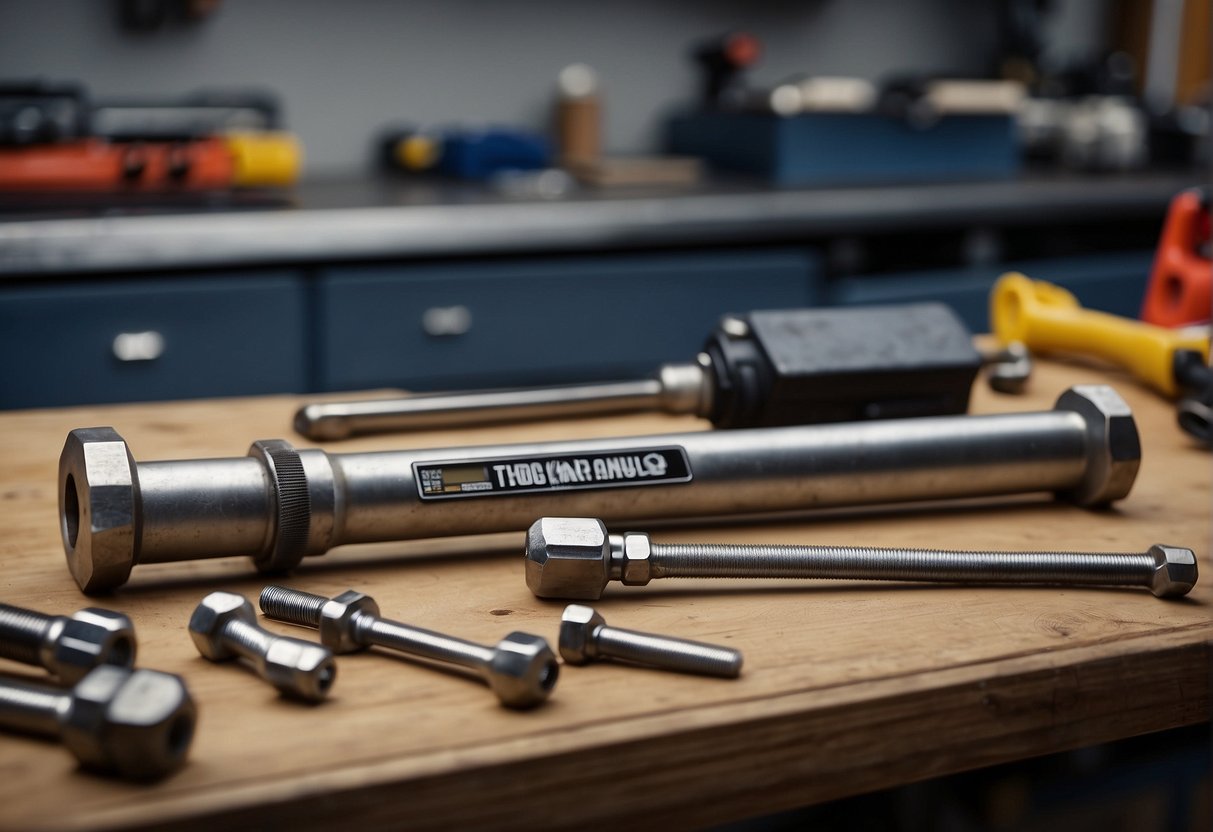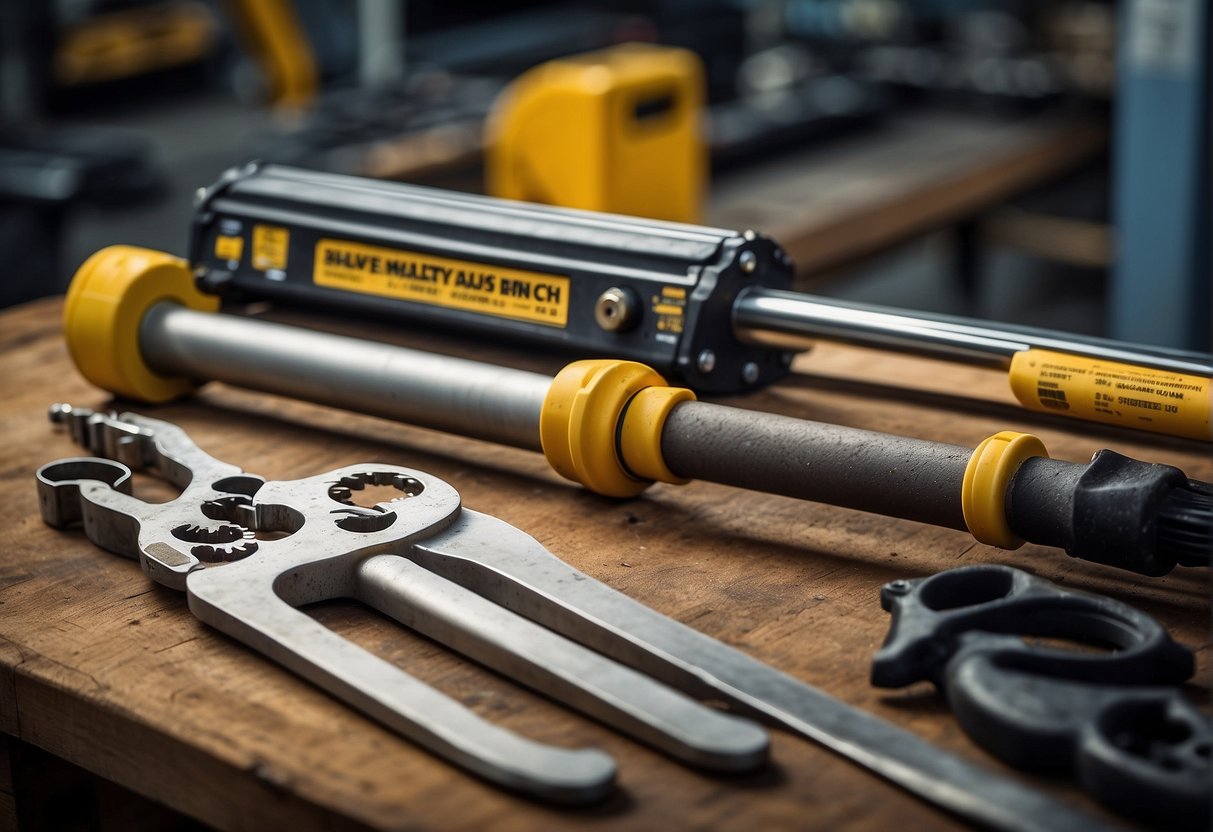Breaker bars and torque wrenches are two of the most essential tools in any mechanic’s arsenal. They both serve different purposes in loosening or tightening nuts and bolts, and each has its own advantages and disadvantages. In this article, I will explore the key differences between these two tools, their functionality and usage, technical specifications, practical considerations, and safety concerns.
Understanding the basics of how these tools work is crucial for anyone who wants to work on cars or other machinery. A breaker bar is a long-handled tool that generates more torque than a regular ratchet, making it ideal for loosening stubborn fasteners. On the other hand, a torque wrench is a precision tool that allows you to measure or control the amount of torque applied to a fastener, ensuring that it is tightened to the correct specification.
When it comes to choosing between a breaker bar and a torque wrench, there are several factors to consider, such as the type of job you are doing, the size and type of fastener, and the level of precision required. In the following sections, we will compare the functionality and usage, technical specifications and varieties, maintenance and calibration, practical considerations and safety, and cost and durability of these two tools.
Key Takeaways
- Breaker bars are heavy-duty hand tools used for loosening frozen nuts or bolts, while torque wrenches allow you to measure or control the amount of torque applied to a fastener.
- When choosing between a breaker bar and a torque wrench, consider the type of job, size and type of fastener, and level of precision required.
- Proper maintenance, calibration, and safety precautions are essential for both tools to ensure accurate and safe operation.
Understanding the Basics
As a mechanic, I know how important it is to have the right tools for the job. Two of the most commonly used tools in my toolbox are the torque wrench and the breaker bar. While both of these tools are used for tightening or loosening bolts, they have different functions and uses.
What Is a Torque Wrench?
A torque wrench is a tool that allows you to measure or control the amount of torque applied to a bolt or nut. This is important because over-tightening or under-tightening a bolt can cause damage or failure. Torque wrenches come in different types, including beam, click, and digital. The beam torque wrench is the most basic and inexpensive type, while the click torque wrench and digital torque wrench are more advanced and accurate.
What Is a Breaker Bar?
A breaker bar is a heavy-duty hand tool used for loosening frozen nuts or bolts. It has a long handle that provides leverage to apply more force to the bolt. Unlike a torque wrench, a breaker bar does not have a torque control or ratchet mechanism. This means that it is not suitable for tightening bolts, as it can easily over-tighten them and cause damage.
In terms of function, a torque wrench and a breaker bar are very different. A torque wrench is used for tightening bolts to a specific torque value, while a breaker bar is used for loosening stubborn bolts. The torque wrench is used to ensure that bolts are tightened to the correct torque, while the breaker bar is used to break loose bolts that are stuck or rusted.
In summary, while both the torque wrench and breaker bar are essential tools in a mechanic’s toolbox, they have different functions and uses. A torque wrench is used for tightening bolts to a specific torque value, while a breaker bar is used for loosening stubborn bolts. Knowing when and how to use each tool can save time and prevent damage to your equipment.
Comparing Functionality and Usage
When it comes to tightening and loosening bolts and nuts, both breaker bars and torque wrenches are useful tools. However, they differ in their functionality and usage.
Tightening and Loosening
Breaker bars are primarily used for loosening tight bolts and nuts. Their long handles provide leverage, allowing the user to apply more force to the bolt or nut. On the other hand, torque wrenches are used for tightening bolts and nuts to a specific torque. They have a mechanism that ensures the user applies the correct amount of force to the bolt or nut, preventing over-tightening or under-tightening.
Torque Control and Precision
The main advantage of torque wrenches over breaker bars is their ability to provide specific torque control and precision. Torque wrenches have a built-in mechanism that allows the user to set a specific torque value. Once the desired torque is reached, the wrench will make a clicking sound to indicate that the bolt or nut is properly tightened. This feature is especially important when dealing with delicate or sensitive parts that require a specific torque value.
Leverage and Power
Breaker bars have longer handles than torque wrenches, providing more leverage and power. This makes them ideal for loosening tight bolts and nuts that require a lot of force. However, torque wrenches are designed to provide maximum torque efficiency when tightening bolts and nuts. They have a ratchet mechanism that allows the user to apply force in a clockwise or counterclockwise direction, making them more efficient and easier to use than breaker bars.
In conclusion, while both breaker bars and torque wrenches have their own specific purpose and functionality, torque wrenches are more precise and efficient when it comes to tightening bolts and nuts, while breaker bars are better suited for loosening tight bolts and nuts that require more force.
Technical Specifications and Varieties
As a mechanic, I have come across different types of torque wrenches and breaker bars. In this section, I will discuss the technical specifications and varieties of these tools.
Torque Wrench Types
Torque wrenches come in different types, including beam torque wrench, digital torque wrench, click-type wrenches, split beam torque wrenches, and intelligent torque wrenches. Beam torque wrenches are the simplest and most affordable type. They have a calibrated beam that flexes as torque is applied. Digital torque wrenches are more advanced and have an electronic display that shows the applied torque. Click-type wrenches have an audible click that signals when the desired torque is reached. Split beam torque wrenches are similar to beam wrenches but have a dual-signal feature that alerts the user when the desired torque is reached. Intelligent torque wrenches are the most advanced type and have features such as wireless connectivity and data storage.
Breaker Bar Designs
Breaker bars also come in different designs. The most common designs are the hinge handle breaker bar and the ratchet breaker bar. Hinge handle breaker bars have a hinge in the middle that allows the user to apply force in a straight line. Ratchet breaker bars have a ratcheting mechanism that allows the user to apply force in a single direction.
Size and Drive Options
Both torque wrenches and breaker bars come in different sizes and drive options. The most common drive sizes are 1/4″, 3/8″, 1/2″, and 3/4″. The size of the tool depends on the size of the fastener being worked on. It is essential to select the correct size to avoid damaging the fastener or the tool. The drive options are either a square or hexagonal drive. The square drive is more common and is used with sockets, while the hexagonal drive is used with hex bits.
In conclusion, torque wrenches and breaker bars come in different types, designs, sizes, and drive options. As a mechanic, it is essential to select the correct tool for the job to avoid damaging the fastener or the tool.
Maintenance and Calibration
As with any tool, proper maintenance and calibration are critical to ensure accuracy and longevity. Both breaker bars and torque wrenches require regular maintenance and calibration to ensure they are working correctly.
Calibration Process
Calibration is the process of verifying the accuracy of a tool and adjusting it if necessary. A torque wrench should be calibrated at least once a year or after 5,000 cycles, whichever comes first. A breaker bar, on the other hand, does not require calibration, as it does not have any internal mechanism to measure torque.
To calibrate a torque wrench, you will need a torque tester, which is a specialized tool designed to measure torque. The process involves applying a known amount of force to the torque wrench and comparing the reading on the wrench to the reading on the torque tester. If the readings are not the same, the torque wrench needs to be adjusted.
Maintenance Practices
Regular maintenance is essential to keep your tools in good working order. Here are some maintenance practices that you should follow for both breaker bars and torque wrenches:
- Keep the tool clean and free of debris.
- Inspect the tool regularly for signs of wear or damage.
- Lubricate the tool as needed to prevent rust and ensure smooth operation.
- Store the tool in a dry, cool place when not in use.
In addition to regular maintenance, you should also follow some safety precautions when using these tools. Always wear appropriate safety gear, such as gloves and eye protection. Be sure to use the tool according to the manufacturer’s instructions and torque specification.
In conclusion, proper maintenance and calibration are critical to ensure the accuracy and longevity of your breaker bar or torque wrench. By following the recommended maintenance practices and safety precautions, you can ensure that your tools are always in good working order.
Practical Considerations and Safety
Choosing the Right Tool for the Job
When it comes to choosing between a breaker bar and a torque wrench, it’s important to consider the task at hand. Breaker bars are ideal for loosening stubborn bolts, while torque wrenches are best for tightening bolts to a specific torque value. It’s essential to choose the right tool for the job to avoid damaging the equipment or injuring oneself.
Another factor to consider is the effort arm required to operate the tool. Breaker bars typically have a longer handle, which provides more leverage, making it easier to loosen bolts. However, this also means that more physical effort is required to operate the tool. On the other hand, torque wrenches require less effort to operate, but they have a shorter handle, which means less leverage.
Safety Measures and Precautions
Safety should always be a top priority when working with tools. When using a breaker bar or a torque wrench, it’s essential to wear safety glasses to protect the eyes from flying debris. It’s also important to use the tool correctly and follow the manufacturer’s instructions.
When using a breaker bar, it’s crucial to be aware of the amount of pressure being applied. Too much pressure can cause the tool to slip, potentially causing injury. It’s also important to use the tool with caution, as the sudden release of tension can cause the tool to snap back, potentially injuring the user.
When using a torque wrench, it’s important to ensure that the tool is calibrated correctly. Using an incorrectly calibrated torque wrench can result in bolts being either too loose or too tight, potentially causing damage to the equipment. It’s also important to use the correct torque value for the bolt being tightened.
In terms of cost and longevity, breaker bars tend to be less expensive and have a longer lifespan than torque wrenches. However, torque wrenches are more accurate and can prevent over-tightening, which can cause damage to the equipment.
Overall, choosing the right tool for the job and following safety precautions can help ensure a successful and injury-free experience when working with breaker bars and torque wrenches.
Cost and Durability
Investment Value
When it comes to investing in tools, one of the primary concerns is the cost. In general, breaker bars are less expensive than torque wrenches. This is because torque wrenches have a more complex design and require more precision in their manufacturing. However, it is important to keep in mind that the investment value of a torque wrench goes beyond its initial cost. A torque wrench can help prevent costly mistakes that can occur when working on sensitive components or when overtightening bolts.
Long-Term Durability
Another important factor to consider is the long-term durability of the tool. Both breaker bars and torque wrenches are designed to withstand a great deal of force, but over time, parts can wear down or break. Breaker bars are generally more durable in the long run since they have fewer moving parts than torque wrenches. However, torque wrenches can last a long time if they are properly maintained and calibrated.
One of the main issues that can affect the longevity of both tools is rust. Rust can cause parts to seize up or break, which can render the tool useless. To prevent rust, it is important to store the tools in a dry place and to keep them clean and oiled.
In summary, when considering the cost and durability of breaker bars vs torque wrenches, it is important to weigh the initial investment value versus the long-term durability. While breaker bars may be less expensive initially, torque wrenches can provide more value in the long run by preventing costly mistakes. Both tools can last a long time if properly maintained and stored, but rust can be a major factor in reducing their longevity.
Frequently Asked Questions
What are the appropriate uses for a breaker bar?
A breaker bar is a useful tool for loosening stubborn bolts and nuts that are stuck together due to over-tightening. It is designed to generate more torque than a ratchet, allowing the user to apply more force to the fastener. Breaker bars are commonly used in automotive repair, construction, and other industries where heavy-duty fasteners are used.
How does a beam torque wrench differ from other types?
A beam torque wrench is a type of torque wrench that uses a calibrated beam to measure torque. Unlike other types of torque wrenches, beam torque wrenches do not require batteries or electrical power to operate. They are simple to use and reliable, making them a popular choice for DIYers and professionals alike.
In what scenarios should you use a breaker bar over a torque wrench or impact wrench?
You should use a breaker bar when you need to loosen a bolt or nut that is stuck due to over-tightening. Breaker bars are designed to provide extra leverage, making it easier to apply more force to the fastener. On the other hand, torque wrenches are used to tighten fasteners to a specific torque value, while impact wrenches are used to quickly tighten or loosen fasteners.
Is it safe to use a torque wrench for loosening bolts?
No, it is not safe to use a torque wrench for loosening bolts. Torque wrenches are designed to tighten bolts to a specific torque value, not to loosen them. Using a torque wrench to loosen bolts can damage the tool and affect its accuracy.
Can a breaker bar be accurately used to tighten lug nuts?
No, a breaker bar is not designed to tighten lug nuts. Lug nuts should be tightened using a torque wrench to ensure that they are tightened to the correct torque value. Over-tightening or under-tightening lug nuts can lead to wheel damage, which can be dangerous while driving.
What are the risks of using a torque wrench as a breaker bar?
Using a torque wrench as a breaker bar can damage the tool and affect its accuracy. The calibration of the torque wrench can be affected, making it difficult to achieve accurate torque values. Additionally, using a torque wrench as a breaker bar can cause damage to the torque measuring mechanism, which can lead to inaccurate readings. It is best to use the appropriate tool for the job to avoid any potential risks.

Hi, I’m Sal Muller of Tooltrip.com. My DIY experience led me to understand essential power tools for home projects. Tooltrip.com guides enthusiasts and professionals in choosing right tools for any job. I provide concise top tool reviews for easier, efficient DIY.






